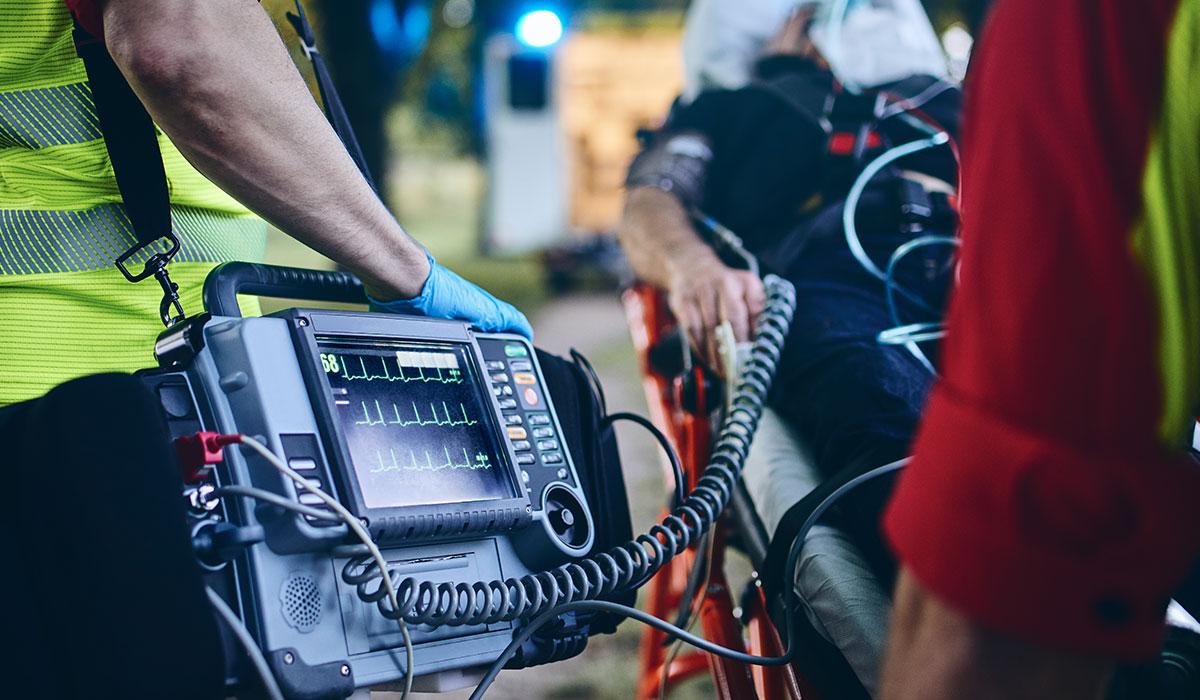
Program Coordinators of the new Hybrid Paramedic Program at TMCC Lauren Miller and Cassandra Fox know firsthand the high demands of this career that saves lives: Fox and Miller have both worked in the Emergency Medical Services industry for a combined 22 years. Although none of that journey was necessarily easy, Miller said that earning her paramedic license was among the most challenging experiences because of the precarious balance act between work, life, and education.
Originally from the East Coast, Miller remembers working the night shift as an Emergency Medical Technician (EMT) and then attending a traditional paramedic training program by day. “The only way to make it work was to work the night shift,” she said. “So I’d work an entire night and then drive to Philadelphia and sit through my classes all day.”
That demanding schedule on top of what is already a high-stress job is what many EMTs experience as they try to educate and advance themselves in their careers. As EMTs, they are always under the direction of a Paramedic, who is considered to be a medical authority outside of a hospital. In order to move from EMT to Paramedic, you need additional training. The problem that arises is: where do you find the time?
First responders typically work 48-hours per week, oftentimes working overnight or 12-hour shifts. As you can imagine, this leaves little time left over for continuing education or professional development. Enrolling in a traditional program is a considerable commitment. “That means they are either in school or at work every single day of the week,” Miller explained. “They have no time with their family, they have no time to exercise, to eat well, or to rest.”
Instead of offering traditional classroom sessions, the Hybrid Paramedic Program offers classes online and adds an additional component of support along with a focus on self-care. “We want our students to have a sustainable career,” Miller said. “It’s a tough job and if you don’t protect that work-life balance and protect your mental health, your career could be fleeting. Instead, we want to support the people who want to do this.”
Managing the Work-Life-Education Balancing Act
While there’s no denying that working as either an EMT or Paramedic is sure to take its toll, it’s also a career that’s always in high demand and for which the reward is great. The Hybrid Program is among the first of its kind that uses the tools of online learning for working professionals who want a fully-accredited program that supports their career advancement while proactively addressing burnout.
“All the lectures are delivered synchronously, and those enrolled in the program are expected to attend,” said Miller. “But let’s say they are at work and they get a call and they can’t watch the entire thing. They can come back and finish the lecture at a later time and still get credit for their attendance,” she said.
The program is 1400+ hours in length and is based on specific objectives. All lectures are recorded and can be referenced more than once. Additionally, students can expect 600+ hours of online instruction that not only include lectures, but also lab sessions, demonstrations, and simulations.
Although there are no official enrollment caps to date, Miller said she will be scrupulous with candidates who will be admitted to the new program. “We’re being selective with our cohorts to make sure they have good letters of recommendation from people in the field. Basically, we want to make sure they’re going to have the support they need to be successful in this hybrid learning environment,” she said.
Successful candidates should have experience as an EMT and given the hybrid nature of the program, be self-motivated to meet deadlines. They will also need a high school diploma and be ready to take and pass an entry exam.
Making a Difference
While Miller speaks highly of a career to which she is dedicated, she admits that it’s not for everyone. Recent studies of first responders have found similar patterns of PTSD to Vietnam veterans that are due, in part, to working long shifts in a high-stress environment. “I have definitely faced every single one of my worst nightmares at work,” she said. “Not many people would want that.”
Developing a self-care routine that includes exercise, a healthy diet, therapy, and whatever else is needed is key to remaining in a career that is equally rewarding as it is taxing. “In terms of building character, I really don’t believe that there’s a better experience than this. It’s incredible to walk into an unknown situation and be the only person who knows what to do...and to help those who have no one else. And even if this doesn’t end up being a career where you spend 30 years in the field, this gives you not just job satisfaction, but the satisfaction of knowing you’ve made a difference in somebody’s life,” she said.
The key to staying in a career that has more than its fair share of challenges? Learning the work-life balance and how to care for yourself so that you can be successful in this high-stakes career. In addition to building practical skill sets, students can expect to be shown several resources that they can rely on to do exactly that.
In the year of COVID-19, first responders witnessed a 30% increase in human deaths due to the pandemic, and that too takes its toll. That is why Miller and others are working hard to build a program that will support these professionals in our community and beyond.
Applications are currently being accepted online. For more information about the Hybrid Paramedic Program, contact the TMCC Emergency Medical Services Program at 775-336-4270.






